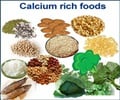The artichoke, which is loaded with antioxidants and phytochemicals, is becoming more popular as consumer interest in specialty products swells.

The authors of a new study say that before artichoke can be successfully established in Texas and southern regions of the U.S. where water is scarce, more information is needed about irrigation and nitrogen (N) management practices. Togo Shinohara, Shinsuke Agehara, Kil Sun Yoo, and Daniel Leskovar from Texas AgriLife Research, Vegetable and Fruit Improvement Center at Texas A&M University published a study in HortScience that should give growers the tools they need to ramp up commercial artichoke operations.
"The aim of our three-season study was to determine crop yield, quality, and nutritional components of fresh artichoke heads in response to differential irrigation regimes and N fertilizer rates", said author Daniel Leskovar. "To introduce artichoke cultural practices into commercial production in water-limited regions of the southern United States, it is important to understand impact of these practices."
The scientists evaluated marketable yield, yield components, quality, and nutrient levels of artichoke heads grown under three irrigation regimes (50%, 75%, and 100% crop evapotranspiration) and four nitrogen rates (0 to 10, 60, 120, and 180 kg/ha) under subsurface drip irrigation.
Results of the field experiments showed that irrigation was more effective than N management for optimizing artichoke yield. Marketable yields significantly increased at 100% evapotranspiration (ETc) compared with 75% and 50% ETc, whereas a 20% to 35% yield reduction occurred at 50% ETc across seasons. The researchers believe that the lack of yield responses to N rates was in part the result of high pre-plant soil NO3-N and NH4-N levels.
Harvest time appeared to have the largest effect on artichoke nutritional quality, followed by deficit irrigation. "Total phenolics and chlorogenic acid of artichoke heads increased as the harvesting season progressed and were highest at 50% ETc during mid- and late harvests in one season", Leskovar noted.
Advertisement
The researchers hope their efforts will bridge the knowledge gap on irrigation and nitrogen management practices and help put artichoke production on the map in Texas.
Advertisement
Source-Eurekalert









